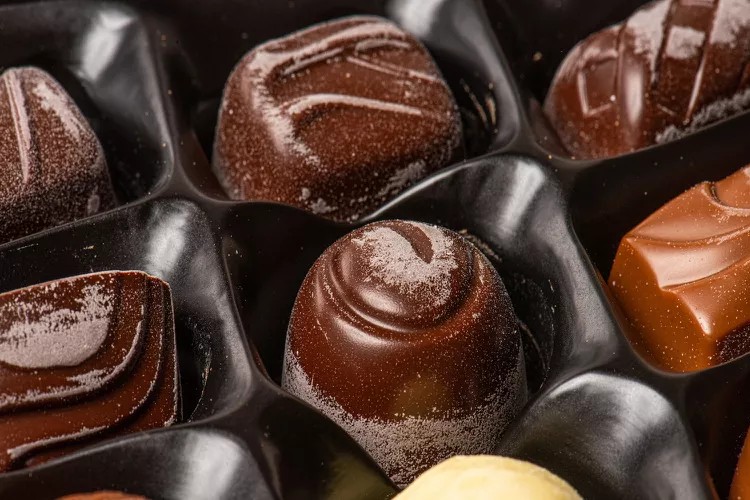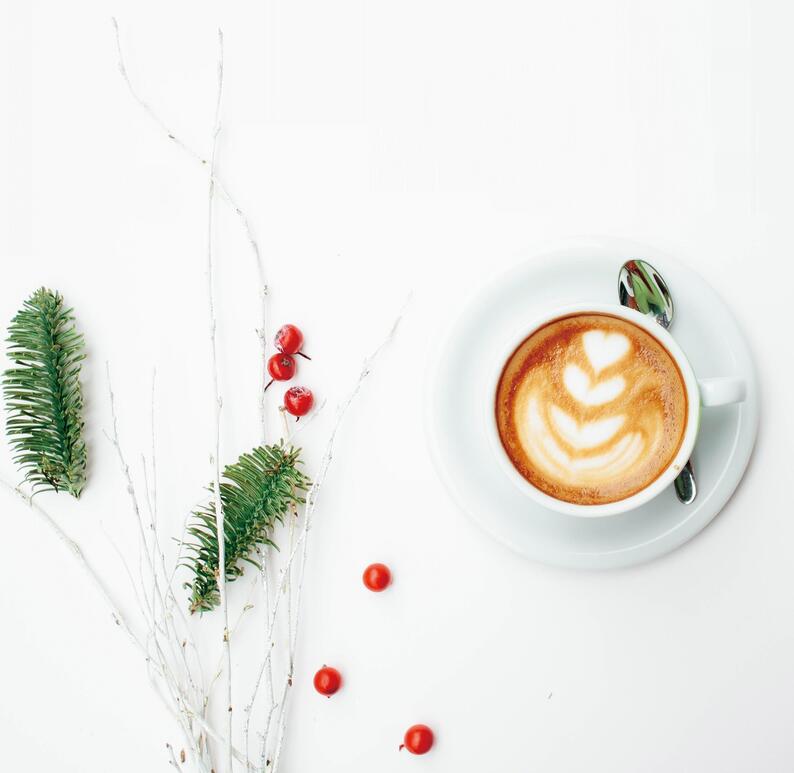If you have ever come across a forgotten bag of chocolate chips at the rear of your cupboard or kept a box of bonbons in the refrigerator for a few days, you might have observed a peculiar, chalky white coating on the chocolate’s surface. This is known as chocolate bloom, typically caused by warm temperatures or exposure to moisture. But what precisely is chocolate bloom, and how can you prevent the formation of those white spots on chocolate? Continue reading to find out everything you need to know.
What Causes Chocolate Bloom?
Chocolate bloom is caused by two main factors: fat bloom and sugar bloom. Both types can lead to the appearance of white or gray streaks on the chocolate’s surface and create a chalky texture. Fat bloom is primarily caused by exposure to heat, while sugar bloom is typically a result of exposure to moisture.
Fat Bloom
Fat bloom is the most common type of chocolate bloom, typically caused by improper tempering of chocolate. Tempering involves carefully melting chocolate and then cooling it to stabilize the fat crystals in the cocoa butter, giving chocolate its smooth, glossy appearance and firm texture when snapped. If the chocolate is heated at too high a temperature during tempering, the crystalline structure in the cocoa butter breaks down, leading to fat bloom.
According to Nathaniel Reid, a James Beard-nominated pastry chef and co-owner of Nathaniel Reid Bakery, chocolate is composed of sugar, cocoa, and cocoa butter, all solid at room temperature. During melting, only the cocoa butter turns into a liquid while everything else remains solid. If the chocolate is heated too much, the desired crystal structure breaks, causing the cocoa butter to melt out.
Teresa Floyd, a food writer and former pastry chef and chocolatier for Christopher Elbow Chocolates, explains that store-bought chocolate is already tempered, exhibiting a shiny appearance and a satisfying snap when broken, thanks to the stable cocoa butter crystals formed during the tempering process. However, when chocolate is exposed to warm temperatures, the cocoa butter softens, melts, and rises to the surface, forming gray streaks called bloom. This occurs due to the migration of fats from the melted crystals, which then re-crystallize in an unstable form, resulting in the appearance of gray streaks on the chocolate’s surface.
Sugar Bloom
Sugar bloom occurs when the sugar in chocolate comes into contact with moisture, often due to improper storage conditions. This issue is more prevalent in environments with high humidity or when chocolate is stored in the refrigerator, leading to the formation of condensation. Teresa Floyd explains that the moisture dissolves the sugar in the chocolate, and when the moisture evaporates, the sugar crystals re-solidify, resulting in the characteristic appearance of spotty white dots and a chalky texture on the chocolate’s surface.
Nathaniel Reid points out that sugar bloom is typically more common in milk and white chocolate varieties as they contain higher sugar content compared to dark chocolate. For example, leaving milk chocolate candies in the refrigerator can lead to water interaction because sugar is hydroscopic, meaning it attracts water, and this interaction causes sugar bloom to form on the chocolate’s surface.
Is it Safe to Eat?
Chocolate with fat or sugar bloom is safe to eat, but it may not provide the best eating experience due to the compromised flavor and texture. Nathaniel Reid explains that chocolate with bloom tends to have a chalky feel and lacks the characteristic snap of properly tempered chocolate. Tempered chocolate has a smooth and pleasant melting property in your mouth, but when it’s not tempered correctly, it may feel crumbly or have a short-grained mouthfeel, altering the overall sensory experience. Additionally, some of the aromas in the chocolate may be affected and perceived differently when bloom is present. While safe to consume, it is advisable to avoid chocolate bloom whenever possible to fully enjoy the desirable qualities of well-tempered chocolate.
How to Avoid Chocolate Bloom
To prevent chocolate bloom, it’s essential to adhere to proper storage practices. Store chocolate in a cool, dark, and dry place with low humidity. For added protection against moisture, tightly wrap the chocolate in plastic wrap or place it in an airtight container or bag. Most chocolate, including homemade bonbons and chocolate bark, does not require refrigeration, but if you have a recipe like chocolate-dipped strawberries that needs refrigeration, ensure using a tightly sealed container.
When making chocolate treats at home, proper tempering is crucial to avoid bloom. Nathaniel Reid suggests melting chocolate on low in the microwave, stirring frequently, which works as effectively as the traditional bain-marie technique. Temperature control during tempering is essential, and using a digital probe thermometer is recommended for accuracy.
To check if your chocolate is properly tempered before proceeding with the recipe, dip a metal spatula, knife, or spoon into the chocolate, tap off the excess, and let it sit on the counter for five to 10 minutes. Well-tempered chocolate should look hard and shiny. If it doesn’t, it’s likely not tempered. In case you observe streaking or light spots, it may have fat bloom. However, Nathaniel Reid assures that mistakes with chocolate can be rectified. If the chocolate is not tempered, you can always remelt it and try the tempering process again, allowing you to salvage the chocolate and achieve the desired results.














Leave a Reply